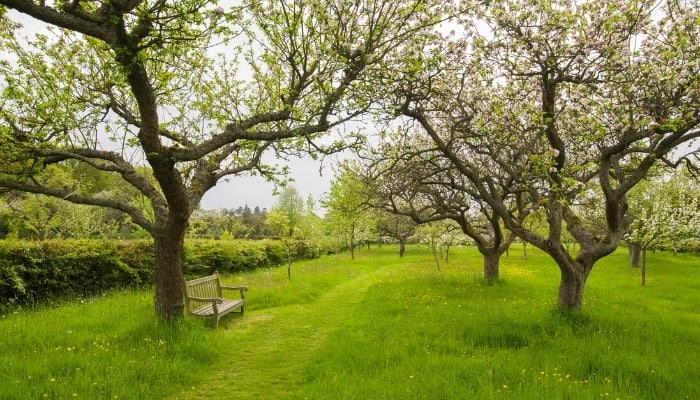If you are interested in homesteading or planting fruit trees in Virginia, it is important to know which trees thrive in the state’s Grow Zones.
Read on below to discover the top 15 fruit trees that are sure to thrive in Virginia!
1. Apple Trees
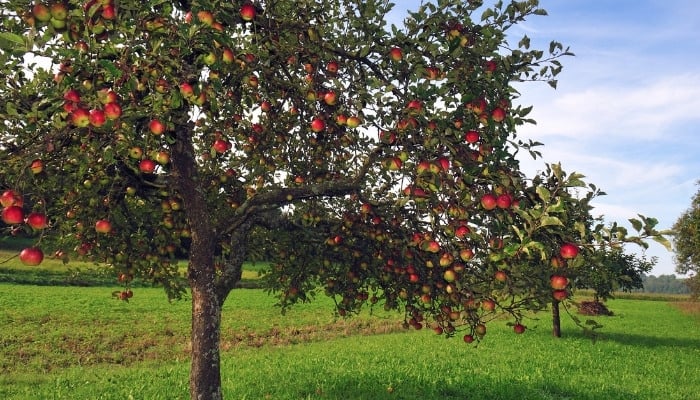
Apple trees are among the most popular fruit trees in the world, including in the state of Virginia.
They grow to heights and widths of 40 feet and bloom every spring. Their flowers last for up to three weeks.
Most apple trees are hardy enough for Zones 3 through 8 on the US Grow Zone chart. The most popular types of apple trees include Fuji, Gala, and McIntosh.
- Average size: 25 to 40 feet tall, 25 to 40 feet wide
- Bloom time: Approximately 3 weeks in the springtime
- Best for Grow Zones: 3 to 8
- Popular varieties: Fuji, Granny Smith, Gala, Red Delicious, and McIntosh
2. Pear Trees
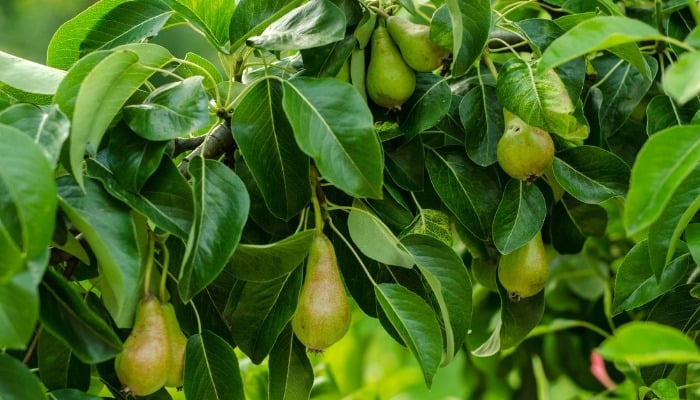
Pear trees are another popular fruit tree for planting in Virginia that thrive in the local environments throughout the state (US Grow Zones 3 through 9).
The average pear tree reaches a height of around 20 feet and width just 5 to 10 feet less than the height.
The flowers on most pear trees open up in the spring and last for an average of around 2 1/2 to 3 weeks.
- Average size: 15 to 20 feet tall and 10 to 15 feet wide
- Bloom time: Approximately 2 to 4 weeks in the springtime
- Best for Grow Zones: 3 to 9
- Popular varieties: European, Asian, and hybrids such as Kieffer
3. Peach Trees
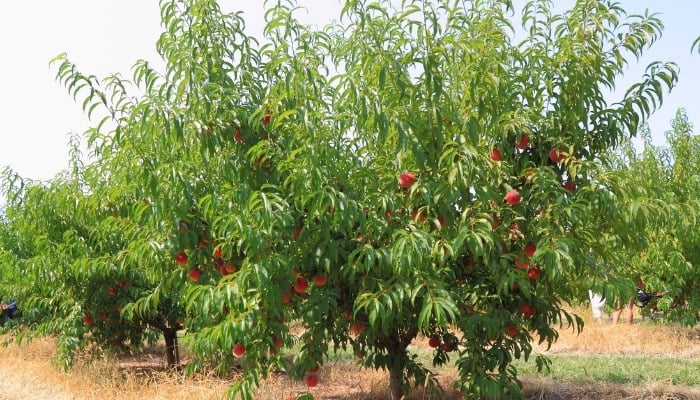
These popular fruit trees are perfect for US Grow Zones 5 through 8 in Virginia. They have flowers that open up in the early spring, normally sometime during March or April, that last for up to 2 or 3 weeks.
Peach trees reach heights of up to 25 feet tall and gain widths of up to 15 feet or wider. The most popular types of peach trees to plant in the state include Belle of Georgia, Babcock, and Donut.
- Average size: 15 to 25 feet tall and 10 to 15 feet wide
- Bloom time: Approximately 3 weeks in the early springtime
- Best for Grow Zones: 5 to 8
- Popular varieties: Early Amber, Babcock, Donut, Elberta, and Belle of Georgia
4. Fig Trees
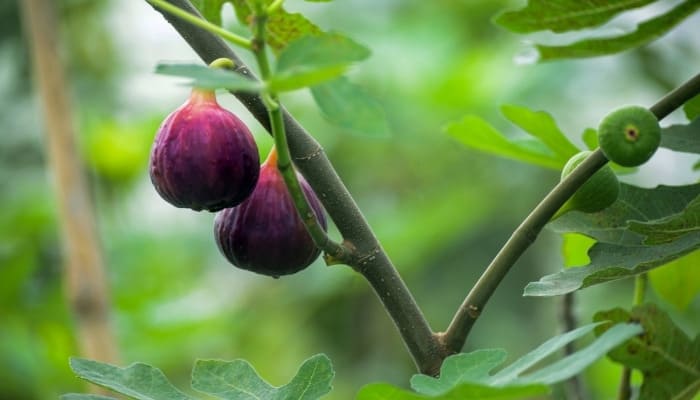
Fig trees grow the best in the US Grow Zones 6 through 10 in the state of Virginia. Each March, April, or May they open up with blossoms that last for around 2 weeks.
The trees reach maximum heights of just over 30 feet tall, and widths of up to 20 feet or less.
Figs aren’t the most popular fruit these days, so choosing the best variety may be a bit tricky. That said, you can’t go wrong with Common Figs, Celeste, or Brown Turkey.
- Average size: 15 to 30 feet tall and 10 to 20 feet wide
- Bloom time: Approximately 2 to 3 weeks in the early summertime
- Best for Grow Zones: 6 to 10
- Popular varieties: Brown Turkey, Common Fig, Celeste, Black Mission, Purple, and Weeping
5. Plum Trees
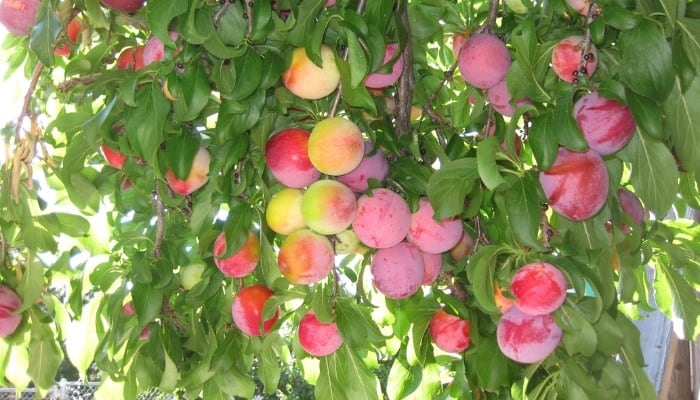
Plum trees, like fig trees, have seen days of far higher popularity than they now have. That said, they grow well in just about every corner of Virginia (US Grow Zones 3 through 8).
Plums are easy-to-grow fruit trees that reach maximum heights of around 20 feet and widths of around 5 to 10 feet less than their height.
They bloom each spring, usually around April, but sometimes plum trees don’t flower until as late as May or June.
- Average size: 10 to 20 feet tall and 8 to 15 feet wide
- Bloom time: Approximately 3 weeks at the beginning of the spring
- Best for Grow Zones: 3 to 8
- Popular varieties: Wild, French, Victoria, Kelsey, Purple, June, Santa Rosa, and Sour
6. Nectarine Trees
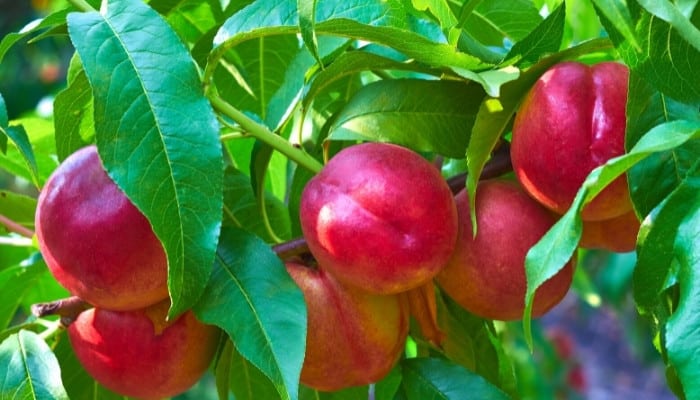
The nectarine tree, or the naked peach tree as they call it around here, is another good choice for planting in Virginia. The best areas for growing nectarines are US Zones 5 through 9.
Every spring, typically around March or April, nectarines flower for between 2 and 3 weeks.
There are a ton of varieties to choose from, and all may bloom at slightly different times each year.
- Average size: 10 to 15 feet tall, 8 to 12 feet wide
- Bloom time: Approximately 2 to 3 weeks at the beginning of the springtime
- Best for Grow Zones: 5 to 9
- Popular varieties: White, Yellow, Clingstone, Freestone, Armking, Arctic, Double Delight, and Fantasia
7. Cherry Trees
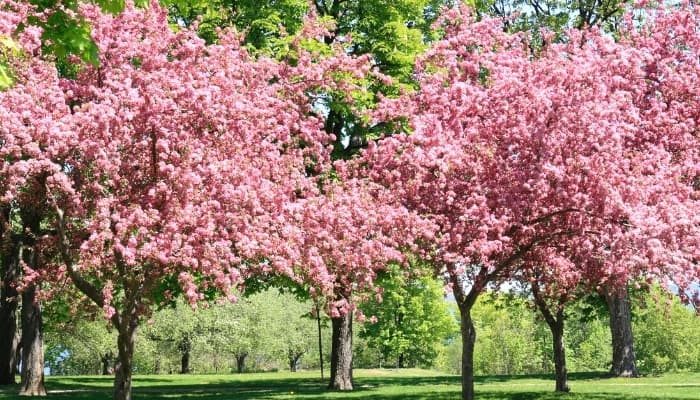
Cherry trees have never been more popular (since the times of George Washington himself) than they are these days… and for good reason; they don’t get too big or too wide, they look amazing when they bloom, and they come in so many varieties.
Cherry trees in Virginia do best in Growing Zones 5 through 7, though many species will survive in even cooler zones.
Bing, Benton, Black, and Yoshino are among the very best/most popular cherry tree varieties to plant and grow in Virginia.
- Average size: 15 to 20 feet tall and 10 to 20 feet wide
- Bloom time: Approximately 2 weeks in the early springtime
- Best for Grow Zones: 5 to 7
- Popular varieties: Bing, Benton, Sweet, Wild, Black, Lapins, Yoshino, and Tibetian
8. Serviceberry Trees
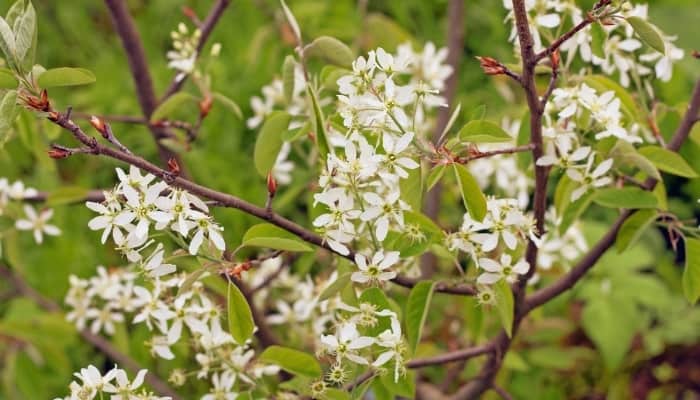
Serviceberry trees are one of those fruit trees you either know well or you’ve never even heard of it before.
The trees grow to heights of 25 feet or tall and up to 20 feet wide and grow well just about anywhere you plant them in Virginia (US Grow Zones 4 through 9).
Each spring, as early as February and March, the serviceberry trees open their blooms for around 2 1/2 or 3 weeks.
- Average size: 10 to 25 feet tall and 10 to 15 feet wide
- Bloom time: Approximately 2 to 3 weeks in the early springtime
- Best for Grow Zones: 4 to 9
- Popular varieties: Downy, Allegheny, Apple, and Shadblow
9. Crabapple Trees
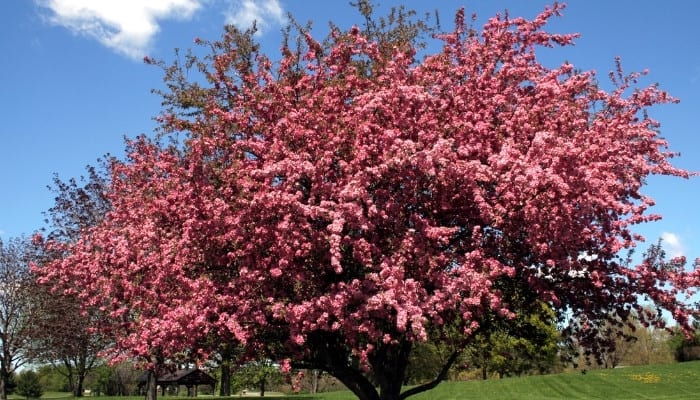
Crabapple trees are a classic fruit tree in the yards and gardens of Americans. These little trees reach maximum heights of around 12 to 15 feet and widths of about the same.
The tree produces small apples months after blooming for a single week or so in the spring.
The trees grow best in the US Grow Zones 4 through 8. A few choice varieties for Virginia include Gorgeous, Sun Rival, Red Sentinel, and Butterball.
- Average size: 10 to 15 feet tall and 8 to 15 feet wide
- Bloom time: Approximately 1 to 2 weeks in the springtime
- Best for Grow Zones: 4 to 8
- Popular varieties: Butterball, Gorgeous, Chinese, Sun Rival, Jelly King, and Red Sentinel
10. Apricot Trees
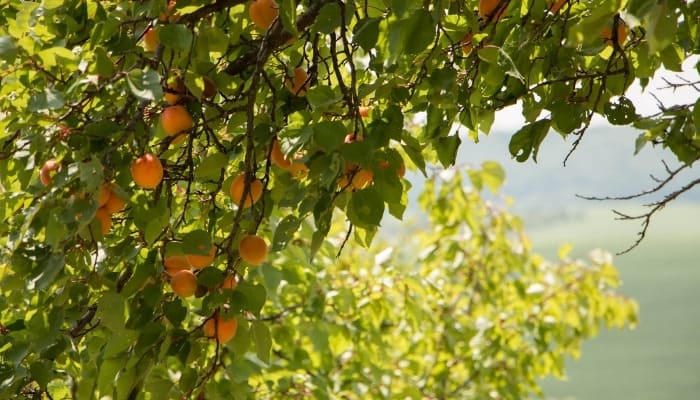
Apricots are one of the largest naturally growing fruit trees in nature; they reach maximum heights of up to 40 feet tall. Their widths are equally impressive at up to 30 feet or more.
In the early spring, as soon as February or March, these big beauties flower for up to 3 weeks.
Apricots trees thrive in US Grow Zones 5 through 8 and are among the best trees for planting in Virginia.
- Average size: 25 to 40 feet tall and 20 to 30 feet wide
- Bloom time: Approximately 2 to 3 weeks in the early springtime
- Best for Grow Zones: 5 to 8
- Popular varieties: Goldbar, Tomcot, Goldstrike, and Rival
11. Asian Pear Trees
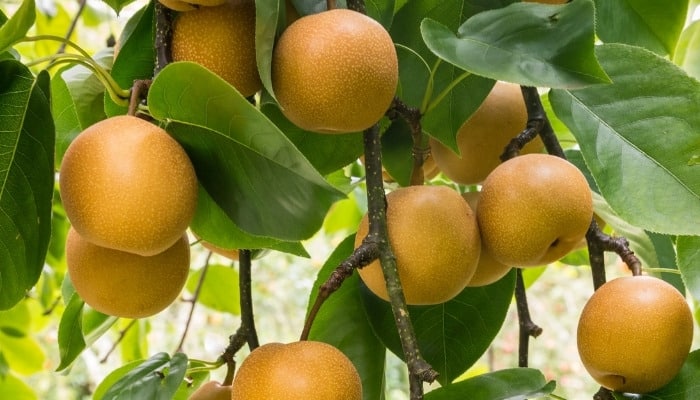
Asian pear trees, believe it or not, are one of the most popular types of fruit trees for gardeners to plant these days (especially in places with a climate like Virginia).
The trees reach towering heights of over 30 feet and widths up to 25 feet and grow best in Zones 5 through 9.
Asian pear trees bloom for around 2 weeks, give or take a few days, each spring. The most popular species to plant right now is the Nijisseiki. Other picks include Niitaka and Chojuro.
- Average size: 25 to 30 feet tall, 15 to 25 feet wide
- Bloom time: Approximately 2 weeks in the springtime
- Best for Grow Zones: 5 to 9
- Popular varieties: Nijisseiki, Niitaka, Olympic Giant, Hosui, Kosui, and Chojuro
12. Persimmon Trees
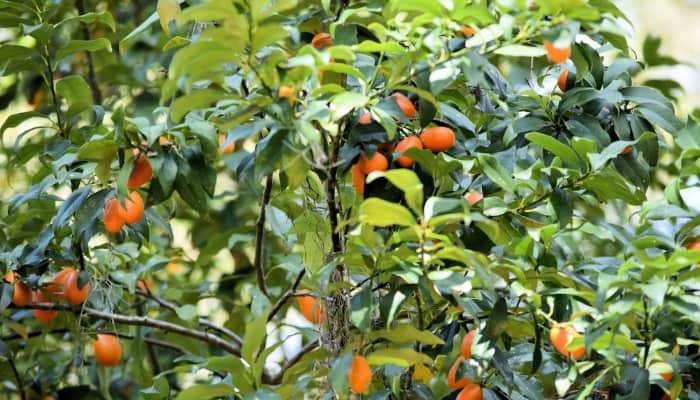
Persimmon trees are another of those fruit trees you’re either already familiar with or you’re not. In states like Virginia, these “little” trees grow all over nature as well in yards and gardens.
The trees top out at heights of around 25 feet and widths of about 15-20 feet. Each summer, as soon as May or June, the persimmon trees bloom for up to 3 weeks long.
Hachiya persimmon trees are by far the top pick for planting in Virginia, followed by Virginiana and Asian varieties.
- Average size: 15 to 25 feet tall and 10 to 15 feet wide
- Bloom time: Approximately 3 weeks in the early summer
- Best for Grow Zones: 4 to 9
- Popular varieties: Hachiya, Asian, American, and Virginiana
13. Elderberry Trees
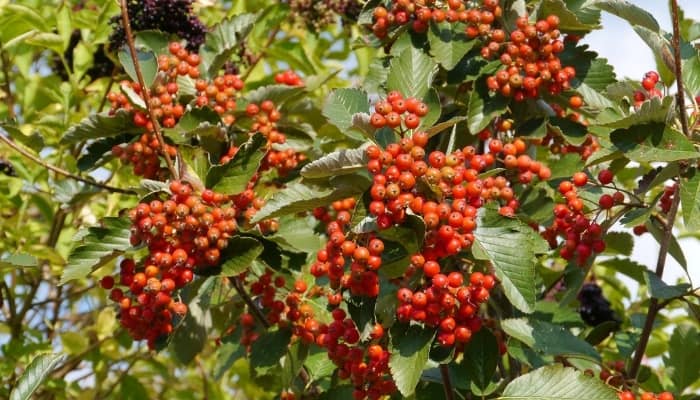
A goodie but an oldy, the elderberry tree is a small tree by almost any standards (any smaller and it would be considered a dwarf species).
On average, it reaches heights of just 10 feet or so and widths of around 6 feet.
The tree is a late spring bloomer, producing and opening flowers in April and May. In Virginia, Zones 4 through 8 are preferred for growing it.
There aren’t many choices when it comes to the variety of elderberry trees; you have the American type and the European type, and that’s about it.
- Average size: 10 to 12 feet tall and 6 to 10 feet wide
- Bloom time: Approximately 2 to 3 weeks in the late springtime
- Best for Grow Zones: 4 to 8
- Popular varieties: European and American
14. Mulberry Trees
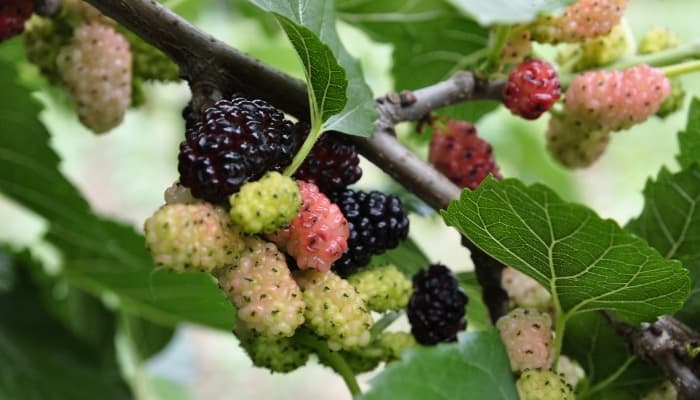
Mulberry trees are another of the once-beloved fruit trees of America that seem to have lost the adoration of the public, but believe it or not, mulberries were once as popular in the US as blueberries and raspberries.
The trees reach heights of 50 feet with massive widths of just 5 to 10 feet less than their height. They bloom each spring and then produce red, black, or white berries in the summer.
The best Grow Zones for thriving mulberry trees are US Zones 4 through 8. That said, they can sometimes survive in Zone 3 as well.
- Average size: 35 to 50 feet tall, 30 to 40 feet wide
- Bloom time: Approximately 2 to 3 weeks in the springtime
- Best for Grow Zones: 4 to 8
- Popular varieties: White, Red, Himalayan, and Black
15. Gooseberry Trees
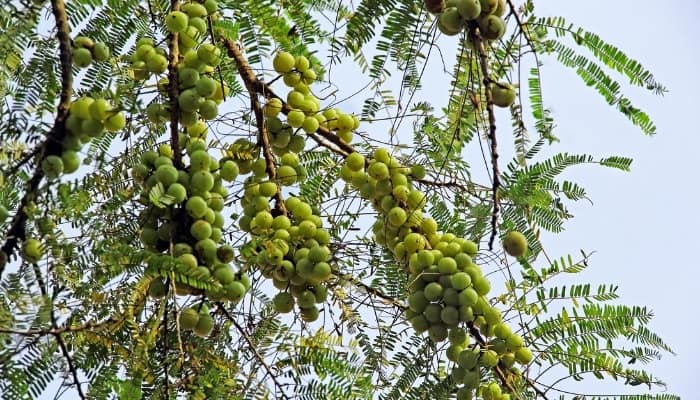
The smallest of all fruit trees, including elderberry trees, is the gooseberry tree (unless you count shrubs like certain blueberry bushes).
It only grows to heights of around 6 to 8 feet and widths of half that much.
The best part about planting gooseberries in Virginia is that the whole state is the perfect climate for them to thrive (Zones 3 through 8).
Gooseberry trees bloom in the springtime for around 2 weeks. They produce red, black, purple, yellow, or green berries depending on the species.
- Average size: 3.5 to 8 feet and 3.5 to 6 feet wide
- Bloom time: Approximately 2 weeks in the springtime
- Best for Grow Zones: 3 to 8
- Popular varieties: Green, Yellow, Red, and Purple (American and European)
Wrapping It Up
From apple trees and gooseberry trees that thrive in all parts of Virginia to mulberries and apricots that do better in the central or southern parts of the state, you have plenty of options from which to choose.
You’re now familiar with 15 fruit trees that are guaranteed to thrive in your state. Hopefully, it makes your decision a much easier one!

